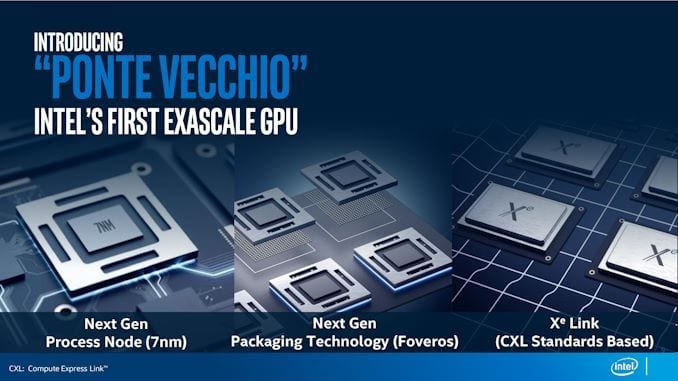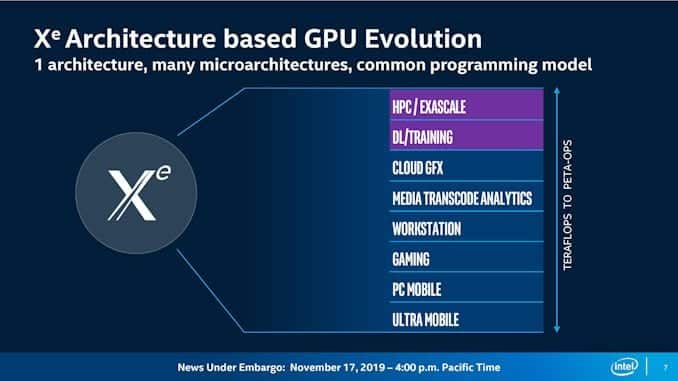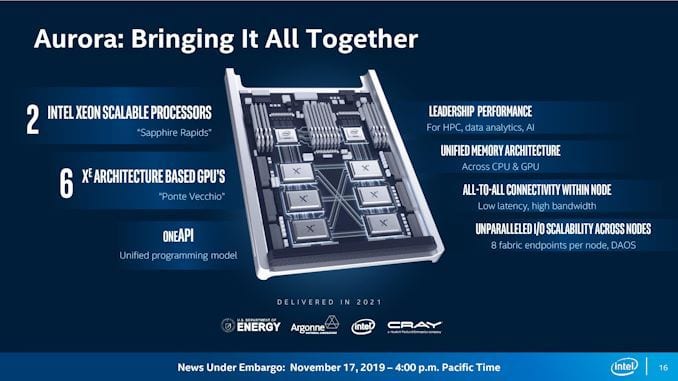Table of Contents
The present does not interest much to Intel, which is clearly betting on a not too distant future with Ponte Vecchio and OneAPI, two huge solutions.
Intel's last few years in the processor market haven't been exactly good. You are having trouble making the jump to 10nm and you are also having trouble with the large number of vulnerabilities detected. But the company is expanding its capabilities and wants to jump into the GPU market, to keep it. For this, he works intensively at OneAPI and Ponte Vecchio.
Ponte Vecchio is Intel's big bet within its architecture Xe. These new GPUs will be based directly on 7nm lithography and will implement great novelties. Not only will it be based on the new lithography, its packaging will be based on Foveros and they will be interconnected through CXL. Hence 'Rambo Caché', which will allow CPU and GPU to share cache.

Discovering Ponte Vecchio
Perhaps one of the most interesting elements is the multiple microarchitecture system. Basically it is that we will have an interface with multiple different implementations, each one for a specific use.
We will have GPUs for graphic execution or in other words, for games. There will be simple solutions for Deep Learning and Artificial Intelligence. We will even have specific solutions for Data Centers focused on computing and connectivity. It will allow Intel to apply the right resources to the right task without relying on software.

The OneAPI Universal Solution
One of Intel's big bets is OneAPI, a simplifying solution. The company wants to offer a simplified programming language with simple releases. Instead of needing different libraries for different programming languages for different hardware, unification is sought. They want to offer a universal language and libraries regardless of the hardware used.

OneAPI is a proprietary interface linked to Intel hardware, but open
Normally when Intel offers a solution, it comes with a commission, quite the opposite of AMD. Until now. Intel will offer OneAPI openly, so it can be used without paying a royalty. We will see if this new functionality is offered free of charge and is as good as the company claims.
It is postulated as a good one for the industry, allowing you to squeeze the hardware for specific tasks. In addition, a system called 'Zero Level' is implemented, which is a direct hardware interface for those who need it. They offer us the possibility of low-level programming, if we need it.

Although OneAPI will be from Intel, the company will allow third parties to make add-ons or modules for this tool. A strategy that makes it clear that Intel wants everyone to work with this tool. How best it will work with your Xeon processors, therefore you are interested in offering something free to sell processors.
Perhaps this solution does not have direct support for NVIDIA CUDA, although that is the end goal. Surely with a Xeon and an Xe, One API will work like a shot, being extremely optimized for them. Although modules could simply be added to run on solutions from AMD and NVIDIA.
Source: SA
